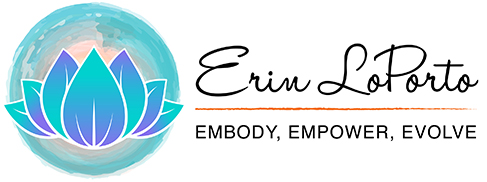One week in, the 4thclass of the day (the 3rdby the same teacher) and I was ready to take my practice home. Then, in filed students with their belief in me. “You are staying right? You have to stay!” But my body and mind were tired; both were ready to give up. I knew I could DO it, but I didn’t know how to enjoy it. I had made it through the previous class with more force than flow and I knew I had moved out of my yoga practice into something else.
I recalled a workshop I attended with a friend of mine at Kripalu. It was a 3-day couples workshop lead by Kate and Joel Feldman on intimacy in relationships. My friend and I were not a couple. We were both single and had our own individual things we wanted to work out when it came to relationships. We talked to the presenters, who agreed to accommodate our unusual request.
During the course of that weekend, we watched ourselves move through a very interesting pattern with every new activity. At least one of us would say “No, I don’t want to do that and this is why…”
The other would respond “That’s okay, I totally understand. We don’t have to do it.” The first would come back and say, “Well, I guess we could try it as long as….”(some little contingency that made them feel a little safer.)
“Are you sure?”
“Yes!” with giddy excitement as we moved into fully unexplored territory, ultimately completing the activity exactly as it was originally presented.
This phenomenon was really profound to me at the time. There was something clearly important about having our protest, our “no” really respected. It seemed to create the safety and space to expand into new and difficult areas. Should the other responded to the “No” with force or defensiveness, we most definitely would never have made it through the new experience because our time would have been spent fighting for our safety and resisting the process.
I thought of this as I settled on the mat for the 4thtime that day. I am often telling my students to notice the state of the relationship between their self and their body. I point out that it is the most intimate relationship they will ever experience in this life and very much the base off all others. I invite them to pay attention to how much trust and kindness exist between the two perspectives and to notice the quality of communication.
As I check in with the state of my body-self relationship, it was not good. My body felt bullied and my mind was frustrated with the body’s lack of cooperation. I had walked into the 3rdclass with the idea “I have to do this” and the resistance to that notion had spread through my body and mind like wild fire. I didn’t deepen into poses; I didn’t open up and let go. I didn’t have the opportunity to feel anything new or expansive or remotely yogic. I had spent the last hour holding against every pose and any benefit it could offer. And it wasn’t just my body that seemed weak and exhausted, my mind was also ready to give up and go home. They were in the middle of a battle.
And so I did what I should have done from the very start. In an instant I communicated to my body “I am sorry. I know you are tired. I am sorry I have not listened. I have not been kind. We are going to stay in this practice, dear body, but you do not have to do any of it, only what feels good. You can relax and breathe. You can stay in savasana or child’s pose the whole class if that is what would support you the most. You are important.” Then I dropped all expectations for what the practice would look like and fully connected with my body, which softened and settled. My breath deepened as I took child’s poses and gently walked my hands to each side of the mat for a gentle stretch. The practiced opened up and I found myself dropping in and completing the whole routine with very minor adjustments. Just as I have witnessed hundreds of times before: as soon as my body’s needs were heard and met, more energy was present, more curiosity and passion awoke. This time I enjoyed the flow and felt revitalized by the end.
Next time you find yourself with a list of “have tos,” just notice your body. It may feel hard, brittle or tired; all signs of “no” in body language. We can’t always get out of our commitments, but we can always decide how we are going to be present for them. Keep sensing into your body as you ask questions and get creative. Maybe it would be happy to perform the task sleepily, in your slippers, with a friend or maybe with just a quick five-minute break. Maybe the activity is not as important as your thought. We put so much pressure on ourselves to be “on” all the time. What would it look like be authentic? More importantly, how much more pleasure could you be tapping into?
And in relationships, do you tend to feel trapped or spacious? Are your no’s being heard? Are you making room for the no’s of others? Can you give that permission and trust? I trust that as you come from that deeper place of alignment, you will find there is more life, energy, love and power in you and around you than you could even imagine. Our minds, when made up can be very powerful, but when align ourselves with the present and what is true, the whole universe supports us.
The relationship between yourself and your body is the most intimate one you will ever really have. Yoga is one way to develop it. But every strong relationship needs boundaries, a strong practice of honoring a “no” without judgment, without resentment, without question. I invite you to listen closer, to yourself, your friends, loved ones, even colleagues. And when you hear it, make space for the “no” and watch what happens.




Recent Comments